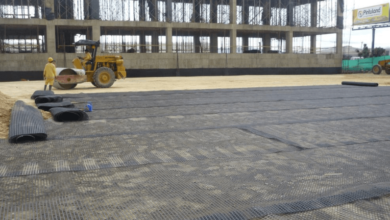Behind the Wheel, Ahead of the Curve: Comprehensive Learning for Confident Drivers

Driving is more than simply a talent; it’s a huge responsibility, a method to gain freedom, and a necessary aspect of life today. But the process from novice to proficient driver may seem intimidating for many people. The path forward is not just straight but also full of tricky laws, changing conditions, and the need to always be on the lookout. For one thing, memorizing traffic signs is not going to make you comfortable on the road. Instead, they must know quite a lot about the road, how to drive safely, and how to stay safe. This article talks about how an organized, in-depth approach to driver education goes beyond the basics to create a new generation of talented and confident drivers who are not just on the road but also ahead of the curve.
The Foundation of Knowledge: More Than Just Basic Road Rules
• Knowing the “Why”: A full driving education doesn’t only tell you what to do; it also tells you why. It goes into the mechanics of driving, the effects of unsafe behavior, and the reasons behind traffic laws, giving you a deeper understanding that helps you make better choices.
• Understanding Traffic Laws: The New York drivers manual is a good place to start, but a good driving school breaks down complicated rules, clears up any confusion, and makes sure that students understand the details of local and state driving laws, such as the rules for different types of roads and weather.
• Basic knowledge of vehicle mechanics and maintenance: Drivers who are sure of themselves know how their car works. Comprehensive courses typically include basic auto maintenance, tire pressure checks, level checks, and warning signals. It gives the drivers the knowledge that is necessary to protect their cars and drive them well.
Mastering Useful Skills: From Parallel Parking to Evasive Maneuvers
• Defensive driving techniques: This is something that is covered in advanced driver education. It instructs how to look ahead, scan for danger, and maintain a safe distance from other cars—and how to react in such a way that reduces the risk that an accident happens at all.
• Precision Driving: Apart from basic turns, the full course brings out the driversthe precision driving skills. They train in perfect parallel Parking, three-point turns, driving in narrow lanes, and and controlled stopping, which helps you gain skill and confidence in complex situations.
• Being good at driving on the highway: A lot of new drivers are scared of highways. Advanced classes spend a lot of effort on safe merging, lane changes, handling high speeds, and reading traffic signs. This makes these important abilities second nature.
See also: Top Apps and Tools to Grow TikTok Likes Automatically
Defensive mind setting: Thinking Ahead and Analyzing Risks
• Hazard Perception Training: This critical module trains drivers to remain vigilant and to identify hazards before they become issues. It changes the focus from reacting to prevention.
• Understanding Blind Spots: Comprehensive learning goes beyond merely looking in the mirrors. It stresses understanding and actively monitoring all blind spots, even those of bigger cars. This significantly reduces risk when changing lanes.
• Distractions: Drivers find out how to identify and handle distractions—from texting and talking on the phone to interacting with passengers to losing focus. This keeps their attention more focused and makes it more difficult to daydream while driving.
Beyond the Test: Learning for Life to Keep Getting Better
• After getting your license, you may take advanced courses at many driving schools. These classes are concentrated on particular skills, like cold-weather driving, performance driving, or defensive driving.
• Learning about new technologies: As technology in cars shifts (electric vehicles and semi-autonomous functions, for example), drivers need to keep learning so that they can understand and take advantage of these new features.
• Adjusting to Change: Laws, the direction traffic flows, and the physical infrastructure can all change over time. Confident drivers are not only open but welcome new experiences and new lessons as they happen in order to be up to speed with these changes and stay skillful.
• Promoting a Safety Culture: The complete driver education will give drivers a lifelong dedication to safety behind the wheel and a philosophy that the improvement of driving skills is never complete.
Real confidence at the wheel is not just about passing a test: it is about learning a lot and mastering practical techniques and also developing a certain attitude, proactive and defensive. A complete driving education, with the aid of experienced instructors and cutting-edge learning tools, is way more than just getting up to past the posted speed. It helps prepare people to drive in the real world, where they have to anticipate, make decisions, and remain calm and precise when things don’t go well. Even inexperienced drivers can hit the road with confidence once they have trained with all of the tools at your fingertips to learn from, and that includes sponging up the information from the New York drivers manual. This level of learning not only makes the individual driver more powerful, but it also makes the roads safer and the driving environment more efficient for everyone.





